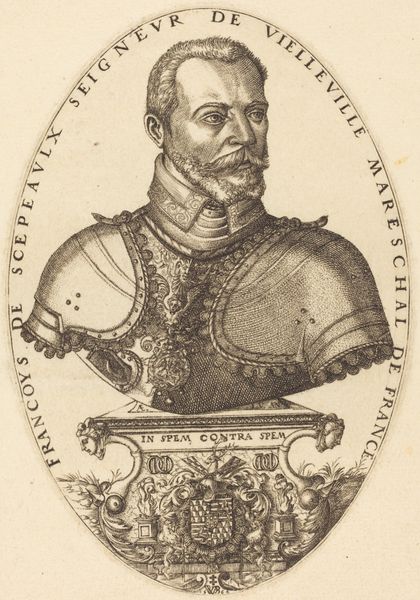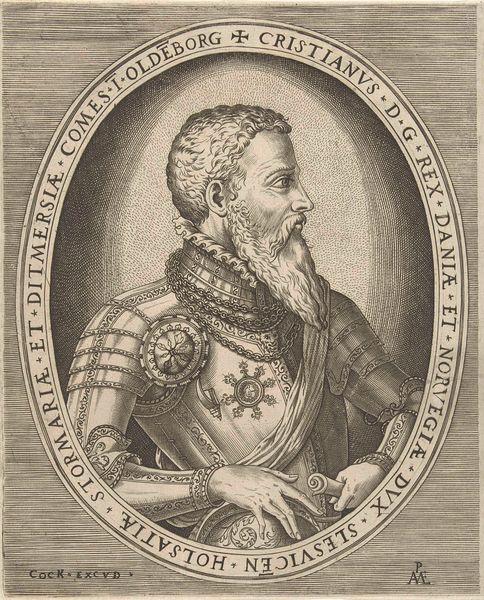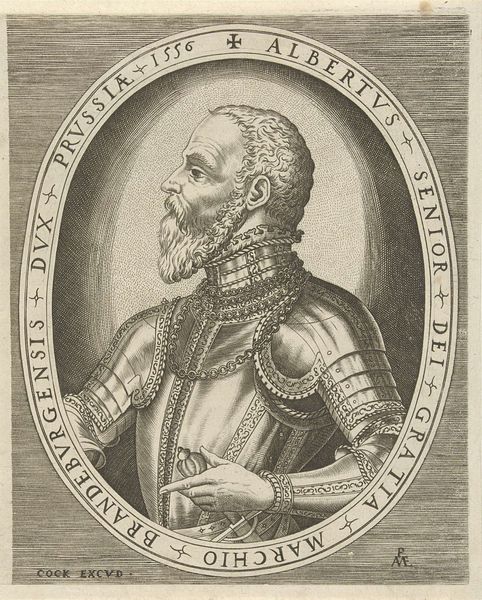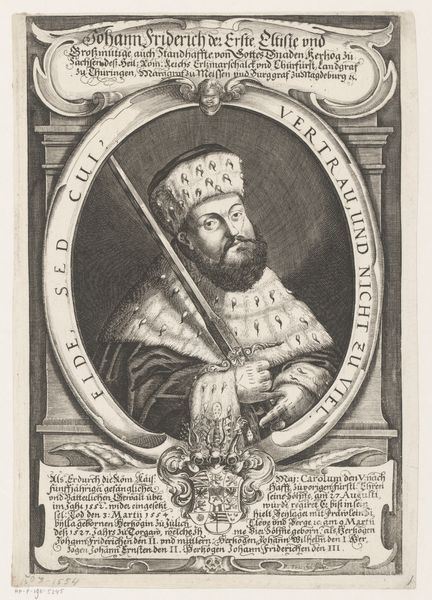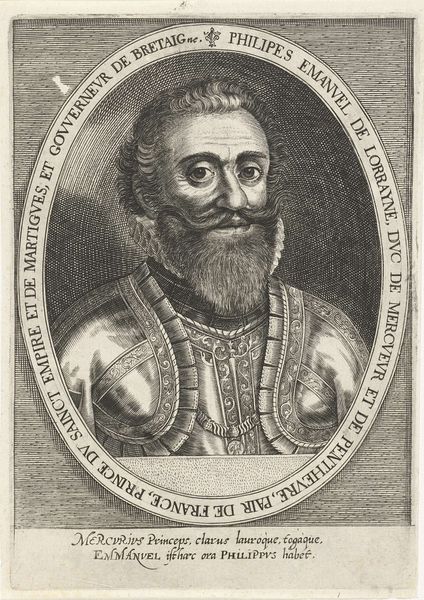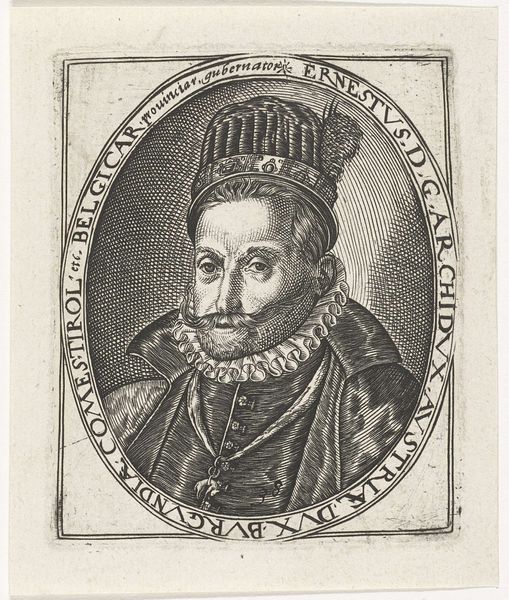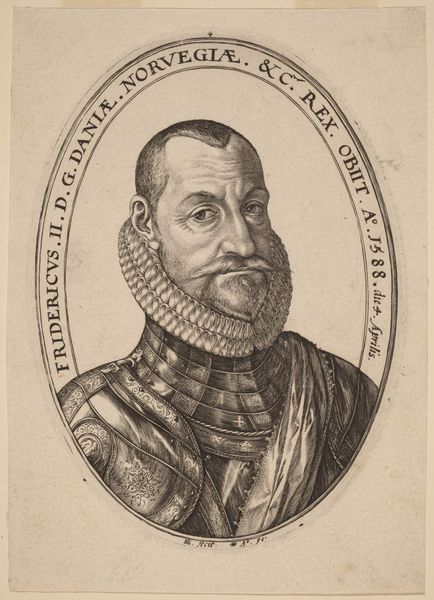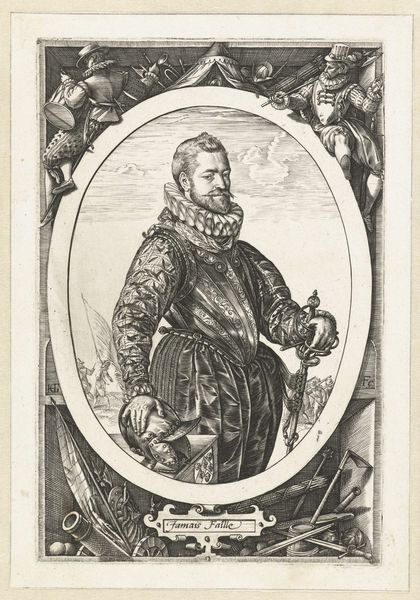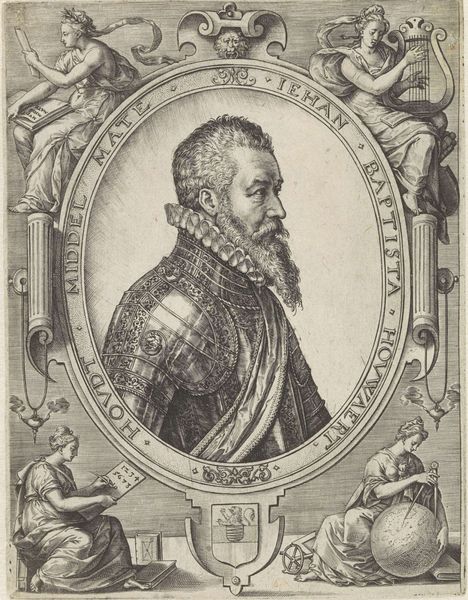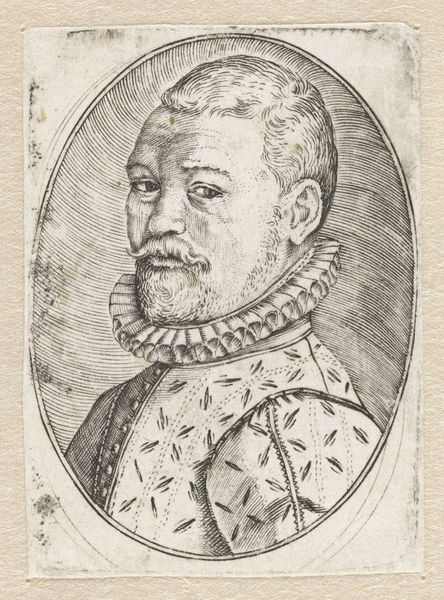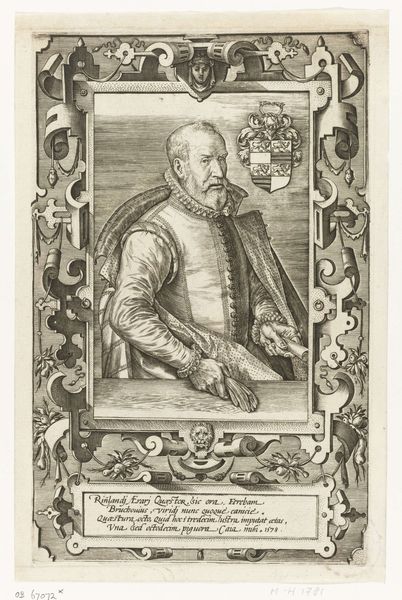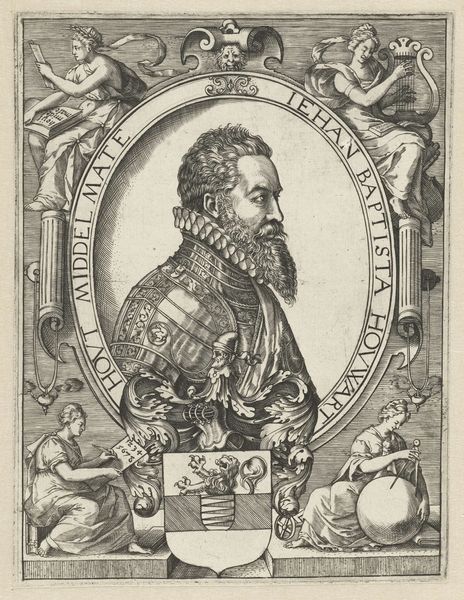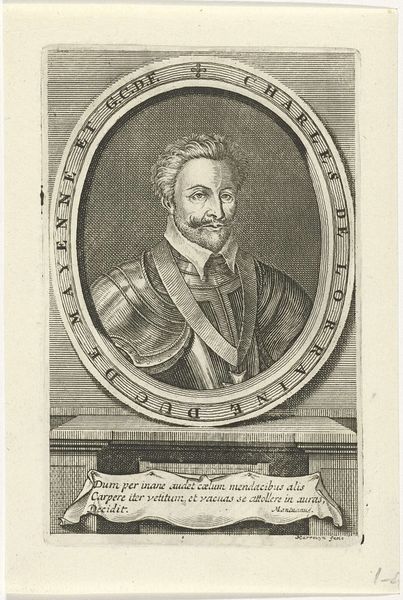
engraving
#
portrait
#
old engraving style
#
figuration
#
form
#
11_renaissance
#
line
#
history-painting
#
northern-renaissance
#
engraving
Dimensions: height 139 mm, width 109 mm
Copyright: Rijks Museum: Open Domain
Curator: The work before us, titled "Portret van Georgius Wirth," was crafted between 1597 and 1599. It’s an engraving by Robert Boissard, currently residing here at the Rijksmuseum. Editor: Immediately, I'm struck by the intensity of detail—almost overwhelming in its commitment to representing texture. The ruff collar alone! And the way the light plays across the fur… it suggests a real opulence, doesn't it? Curator: Precisely. Note the composition. The oval frame, filled with detailed text and floral elements, serves to highlight the central figure. It draws our eyes immediately to Wirth's direct gaze, which conveys a sense of gravitas and intellectual authority. Semiotically, consider the deliberate inclusion of symbolic ornament framing his likeness. Editor: And what of Wirth himself? His attire and the tools he holds suggest something about his status and occupation. It feels as though the engraving is also an attempt to visually communicate Wirth’s achievements. How were such prints produced, disseminated and used to cultivate authority in the period? The layering of his robes communicates more than just status: their careful making indicates considerable work and expense in production. Curator: Indeed. Robert Boissard employed meticulous line work to capture the subtleties of light and shadow. The linear nature of the engraving, a hallmark of the Northern Renaissance, allowed for mass production, democratizing the portrait and enabling wider circulation. Observe the frame itself, laden with floral garlands; a deliberate inclusion designed to symbolize knowledge. Editor: The act of reproduction seems crucial. I wonder about the division of labor required for prints such as this. Who was cutting these lines and to whose economic benefit did this likeness circulate? Also the paper itself, was it sourced locally and how does its texture play off the lines of the engraving? Curator: Questions of value are precisely what we should ask ourselves as viewers! Boissard offers a snapshot into a highly-refined, technical art. It showcases a capacity to reproduce realistic textures that alludes to his skillset as an engraver. Editor: The close study of materials always deepens the viewing experience for me! Looking closely at the textures and techniques used, I come away with a deep appreciation for the skilled labor involved. Curator: For me, it illuminates how structure and formal choices can construct and disseminate meanings about status, intellect, and cultural significance.
Comments
No comments
Be the first to comment and join the conversation on the ultimate creative platform.
